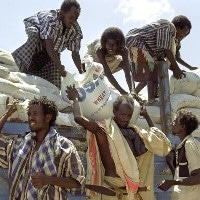May 14 2019
IIASA scientists partnered with colleagues in Japan to explain the effects of strict climate mitigation policies on food security. The team identified smart and comprehensive climate policy designs where the danger of food-security for hundreds of millions of people could be solved at a reasonable cost.
 © Sjors737 | Dreamstime
© Sjors737 | Dreamstime
In a recent research paper published in Nature Sustainability, an international research team that comprised of scientists from IIASA, Kyoto University, Ritsumeikan University, and the National Institute for Environmental Studies (NIES), Japan, for the first time projected how food security could be negatively impacted by the climate mitigation policies executed by multi-Integrated Assessment Models (IAMs) and the cost related to avoiding opposing side effects. More precisely, they explained the association between food security and climate mitigation, and offered cost estimates for probable solutions to the trade-off between food security and climate mitigation, taking into consideration the ambiguity signified by an ensemble of IAMs.
Food security is one of the areas looked into by the UN Sustainable Development Goals (SDGs). The aim of SDG2 especially is to realize “zero-hunger” by 2030. The subject of food security has been studied comprehensively in the framework of climate change impacts related with yield variations over the last many years, and more recent studies also scrutinized the effect of climate change mitigation on commercial agriculture.
The Paris Agreement states a long-term temperature goal for global climate policy: “holding the increase in the global average temperature to well below 2 °C above pre-industrial levels and pursuing efforts to limit the temperature increase to 1.5 °C”. Consequently, studies examining the climate change mitigation necessitated by the Paris objectives have identified a prospective need for land-based measures such as large-scale bioenergy production and afforestation, which could consecutively raise concerns about implications for food security. These low emission scenarios are creating the link between SDG2 (hunger) and SDG13, which particularly concerns climate action, progressively crucial.
According to the scientists, climate change mitigation fully aimed at reaching climate goals could produce a risk of negatively impacting food security. If not handled properly, the danger of hunger because of mitigation policies is extraordinarily amplified: under the 2 °C and 1.5 °C scenarios, for example, the danger of hunger considerably changes compared to the baseline situations. Based on the situation, the results specify that an extra 130 to 280 million people could be at danger of hunger in 2050.
The team additionally scrutinized the costs of probable solutions to such unintentional adverse-side effects through “smart and inclusive climate policies”. Several economic substitutes were studied, such as food aid to low-income nations, agricultural subsidies, and food aid only to populations at risk of hunger. The costs of the substitutes were found to be between 0 and 0.46% of GDP. These are very reasonable figures if compared to the costs of climate change mitigation.
The scientists highlight that direct impacts of climate change on yields were not evaluated and that the direct profits from mitigation with regards to avoided yield losses could be substantial, thus additionally reducing the above costs. While results differ across models and model executions, the qualitative implications are strong and demand for a careful design of climate mitigation policies taking into consideration agriculture and land prices.
“While we found a similar effect in an earlier joint paper published in Environmental Research Letters, this time we applied multiple alternative models and showed that the results are robust and have a very high confidence,” explains Shinichiro Fujimori from Kyoto University, lead author of the paper and a guest researcher in the IIASA Energy Program. “We would like to emphasize that land and food-related climate change mitigation policies should be carefully designed. Policymakers should be aware that potential issues could arise as a result of the uniqueness of the food system compared to, for example, the energy system.”
The findings of the paper are central to understanding that we can reach very low climate targets together with sustainable land-use and agricultural development. Climate policies need to go beyond carbon pricing, take into account distributional effects, and shield the poor. If properly managed, the costs of such policies will be relatively small.
Keywan Riahi, Director, Energy Program, IIASA